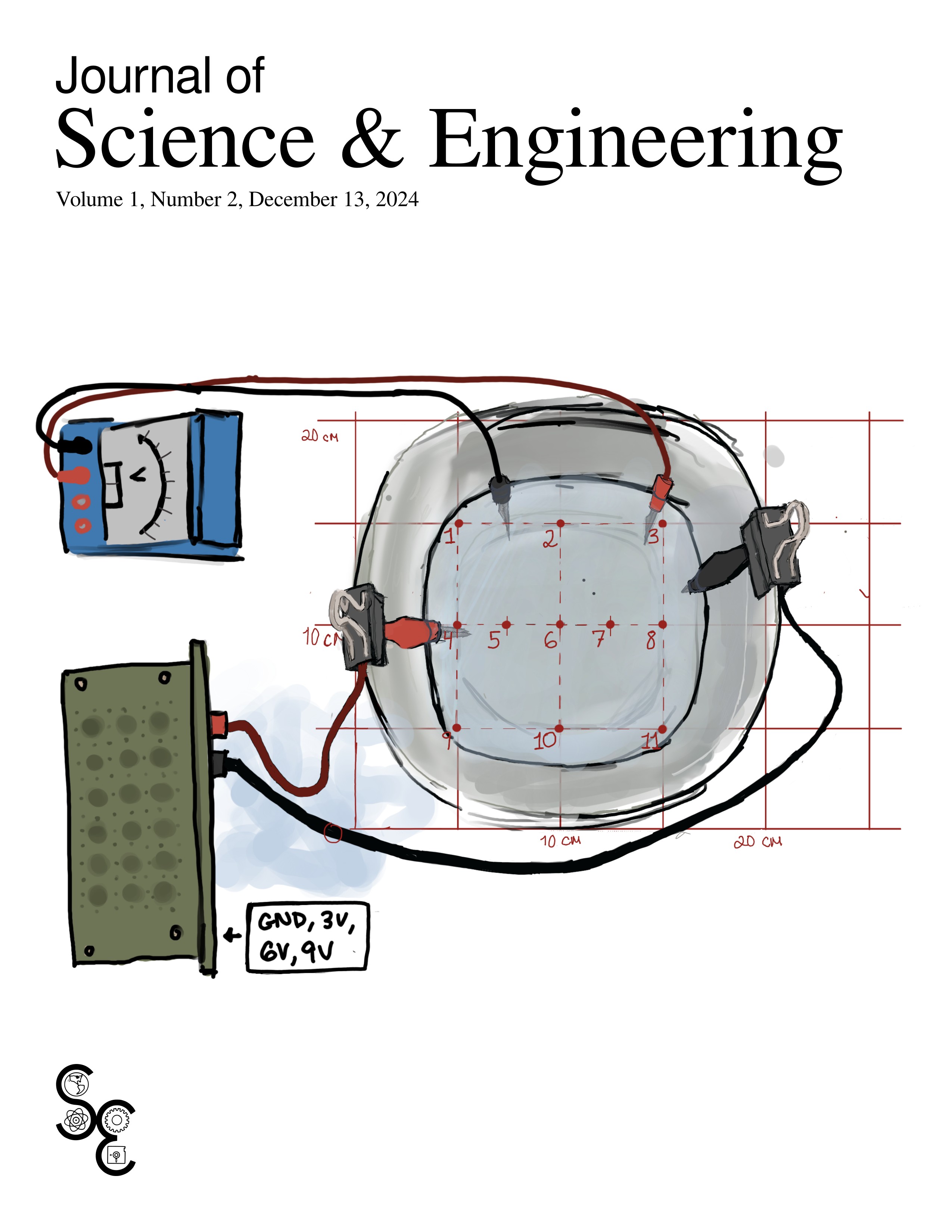Mapping electric potential and electric field distribution in saltwater and investigating the effect of distance from source
Keywords:
equipotential, electric field, mappingAbstract
When two opposite point charges are placed near each other, the equipotentials of the system are roughly circular around the charges, roughly linear in between the charges, increase in magnitude closer to the positive point charge, and run perpendicular to the electric field lines between the two charges. To simulate two point charges near each other in a conductive medium and test if this hypothesis is true, we placed two leads in saltwater and measured the voltage at a predetermined set of points. Our results confirmed the hypothesis, showing a gradual decrease in electric potential with distance and the formation of consistent equipotential lines. This experiment demonstrates how the principles of electric fields and conservation of energy apply in a physical system, providing a hands-on understanding of how electric potential behaves in different regions of space.
References
P . A. Tipler and G. Mosca, Physics for Scientists and Engineers, 5th ed. New York: W H Freeman and Company, 2004.
J. Stewart, D. Clegg, and S. Watson, Multivariable Calculus, 9th ed. Cengage, 2020.
L. Heilman, Data Product Specification for Salinity, Ocean Observatories Initiative, Consortium for Ocean Leadership, 1201 New York Ave NW, Washington, DC 20005, 2023, https://oceanobservatories.org/wp-content/uploads/2023/09/1341-00040_Data_Product_SPEC_PRACSAL_OOI.pdf
Downloads
Published
Data Availability Statement
Data are available by contacting the authors
Issue
Section
License
Copyright (c) 2024 Journal of Science & Engineering

This work is licensed under a Creative Commons Attribution-NonCommercial-ShareAlike 4.0 International License.





